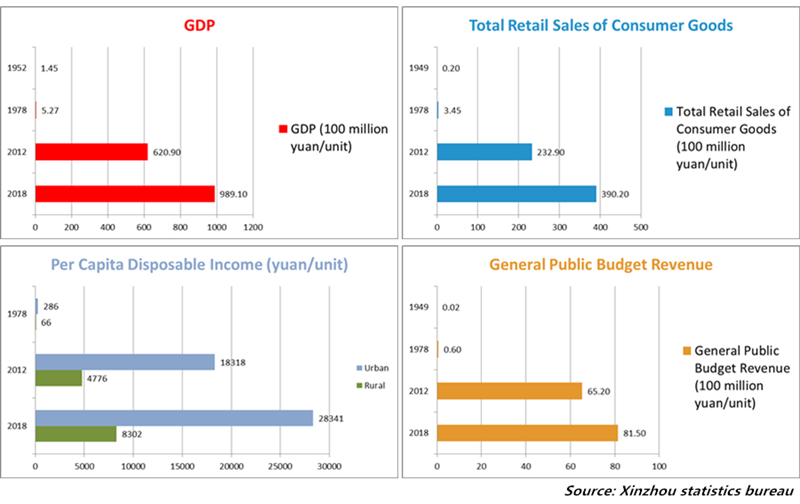Xinzhou steps up in social, economic growth
Updated: 2019-09-23

A figure for economic and social statistics of Xinzhou city [Photo/chinadaily.com.cn]
Xinzhou city in northern Shanxi province has targeted poverty relief for its people over the past 70 years, with the number of rural poor people having dropped to 53,700 in 2018.
The city has, in addition, moved 797 villages in remote and undeveloped areas, officials said.
The city has been keen on economic transformation and development. Focusing on promoting supply-side structural reform of agriculture, it has been developing local grain brands and optimizing the structure of its local planting so as to build the city into a national hub for grain production.
In terms of the structural optimization of its industry, the value added of Xinzhou's non-coal industrial sector last year accounted for more than 50 percent of its total industrial added value.
Focusing on three UNESCO World Heritage Sites -- Mount Wutai, Yanmen Pass and Luya Mountain -- the city has been developing tourism as a pillar industry for years. The private sector currently contributes over 50 percent of total GDP.
Xinzhou has also worked on furthering its opening up to the outside world, officials said.
It has participated in a series of national development strategies such as Belt and Road Initiative, Beijing-Tianjin-Hebei region coordinated development and the development of the Xiongan New Area.
Officials said a lot of transport infrastructure facilities have opened up. These include the Mount Wutai Airport, Yuanping-Taiyuan section of Datong-Xi'an High-speed Railway, which has been opened to traffic.
In addition, the city is committed to bettering the lives of its locals. A total of 13 counties and eight towns in the city have been recognized for improvements to their sanitation, living environment and health care, with the number ranking first in Shanxi province.
The level of health care insurance has been improved, with the participation rate of rural cooperative medical care insurance reaching 98.98 percent.
The city's education has developed steadily with several teaching and management reforms in primary and secondary schools having enhanced the quality of teaching there.

